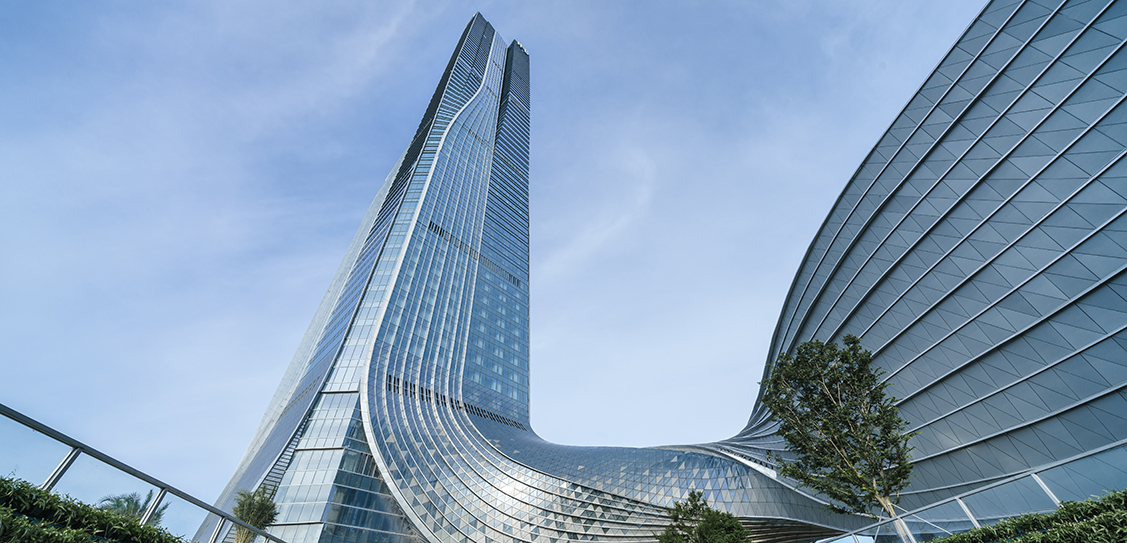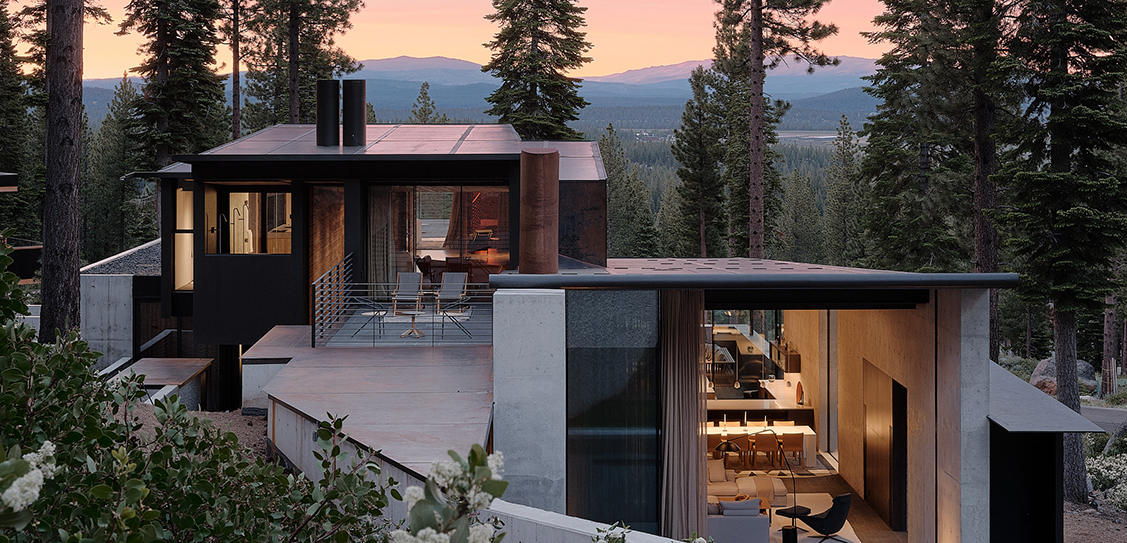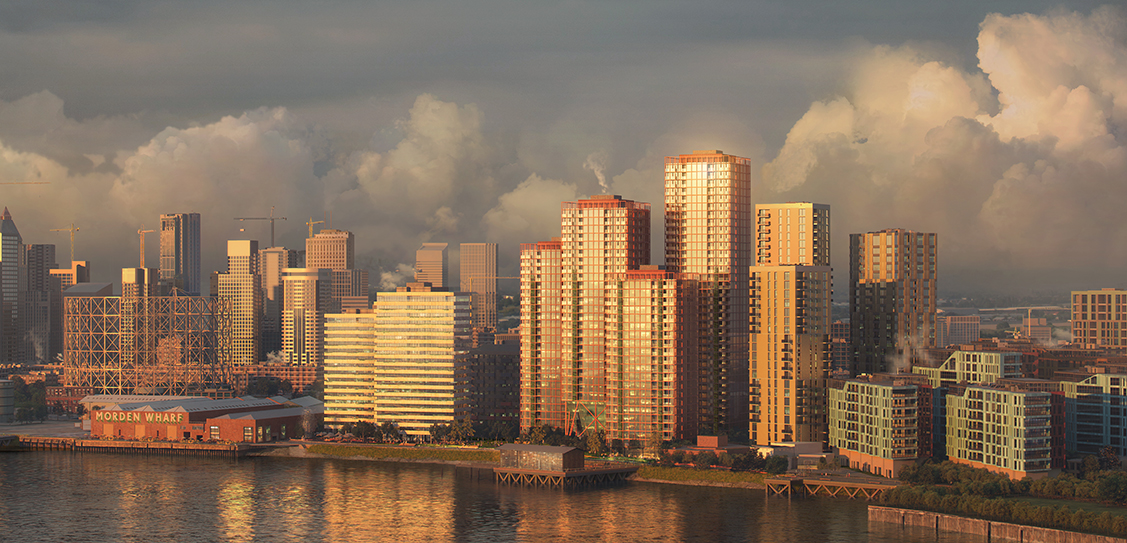Aedas complete Zhuhai's tallest building and financial landmark
The Hengqin International Financial Centre Tower has been completed, towering at 339 m at a point that stands at the estuary of the Pearl River and overlooking Macau.
Inspired by "The Nine Dragons", a famous scroll of Chinese painting from the Song Dynasty, the design embodies the convergence of energy in the architectural form. The traditional totem of the dragon emerging from the sea symbolises new life breaking through the barriers and ceaselessly flourishing into an imposing power. It’s transformed into the elegant curves and powerful twists of the tower, complementing the undulating surface of the waters around it. With four vertical blocks shooting up to the sky and merging into the building, the tower itself also becomes a symbol of talents and resources congregating at Hengqin to create a new metropolis in the Greater Bay Area.
Faulkner Architect’s minimalist Lookout House on California’s extinct volcano
The material palette is minimal, including concrete and walnut, and the red-orange glass suggests the colour of cooling magma.
The building site had a significant influence on the design for this house; layered with intense geologic history at the base of a three million-year-old volcano, the site is a north-facing 20° slope with equal parts refuge and prospect at 6,300 ft above mean sea level. Consisting of volcanic sediment from ancient flows and strewn with boulders up to 15 ft in diameter, the site is in an open stand of second-growth Jeffrey pine and white fir trees. The vertical, plumb lines of the tree trunks, stripped bare from years of deep snowfall, reach for the light. Standing upright at an angle to the slope, they provide a constant reference to the perpendicular horizon in the distance.
The glow from the colourful red-orange glass extends to the interior, bathing the entry and central stair in light. To the east, a cleared ski access adjoining the site informed the way the plan is built into the slope; a narrow slot within the house's massing mirrors the continuous space of the ski run. This slot connects independently zoned territories with various levels of privacy within the house as a whole.
Zaha Hadid Architects design Shenzhen’s Science & Technology Museum
With a total area of approximately 125,000 sq m, the museum’s U-shaped plan provides intuitive orientation and navigation, guiding visitors through its sequence of interconnecting public spaces, galleries and educational facilities centred around its atrium courtyard; defining a journey of discovery that unites the city and park with the museum’s inspirational exhibitions.
As the museum will be located within Shenzhen’s subtropical climate with a mild winter and warm spring and autumn, the design optimises energy conservation during Shenzhen’s hot, humid summer with the very high thermal insulation performance of its envelope together with high-efficiency glazing, HVAC, lighting and smart building management systems.
The museum’s procurement, full life-cycle performance and adaptability for future configuration are also evaluated and assessed to reduce embodied carbon and achieve the highest three-star rating of China’s Green Building Evaluation Standard.
Africa’s tallest skyscraper complex embodies the national state emblem
Djibouti Tower, designed by Alex Wizhevsky, is a high-rise cultural and business centre.
The project is a composition of three towers; the central tower represents a spear and a shield and the star at its top symbolises the unity of the nation. There are two symmetrical towers on both sides of the spear. They are designed in the form of two traditional Djibouti daggers, decorated with elements symbolising a Laurel wreath. The Laurel wreath represents the peace granted to the people of Djibouti after independence on 27 June 1977.
Djibouti Towers will be the tallest complex of skyscrapers in Africa at a height of 243 m. It is expected that representatives of large international business, financial sector and retail will be located on the territory of two towers, each of them will be 43 floors high.
U+I reveal images of London’s Morden Wharf designed by OMA
Morden Wharf is a new mixed-use neighbourhood comprising a new riverside public park, 1,500 homes and employment space on Greenwich Peninsula, London.
The open space at Morden Wharf will include play and recreation space designed for all age groups, amounting roughly to three-and-a-half football pitches, helping to address the existing deficit of open space in the area.
The scheme also comprises 12 high quality and tenure-blind residential buildings. The homes, of which 35% will be affordable, will include a mix of private sale, shared ownership and London Affordable Rent, which in particular will have a focus on family homes. A number of the residential buildings will feature vertical green façades that will help to provide natural screening and improve air quality.



